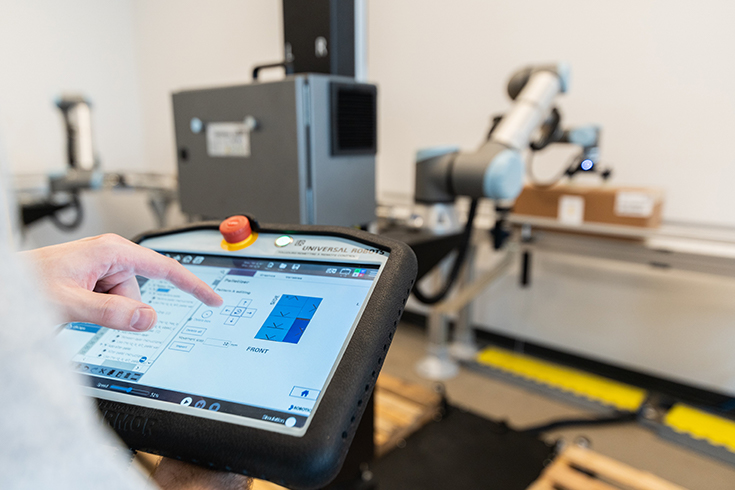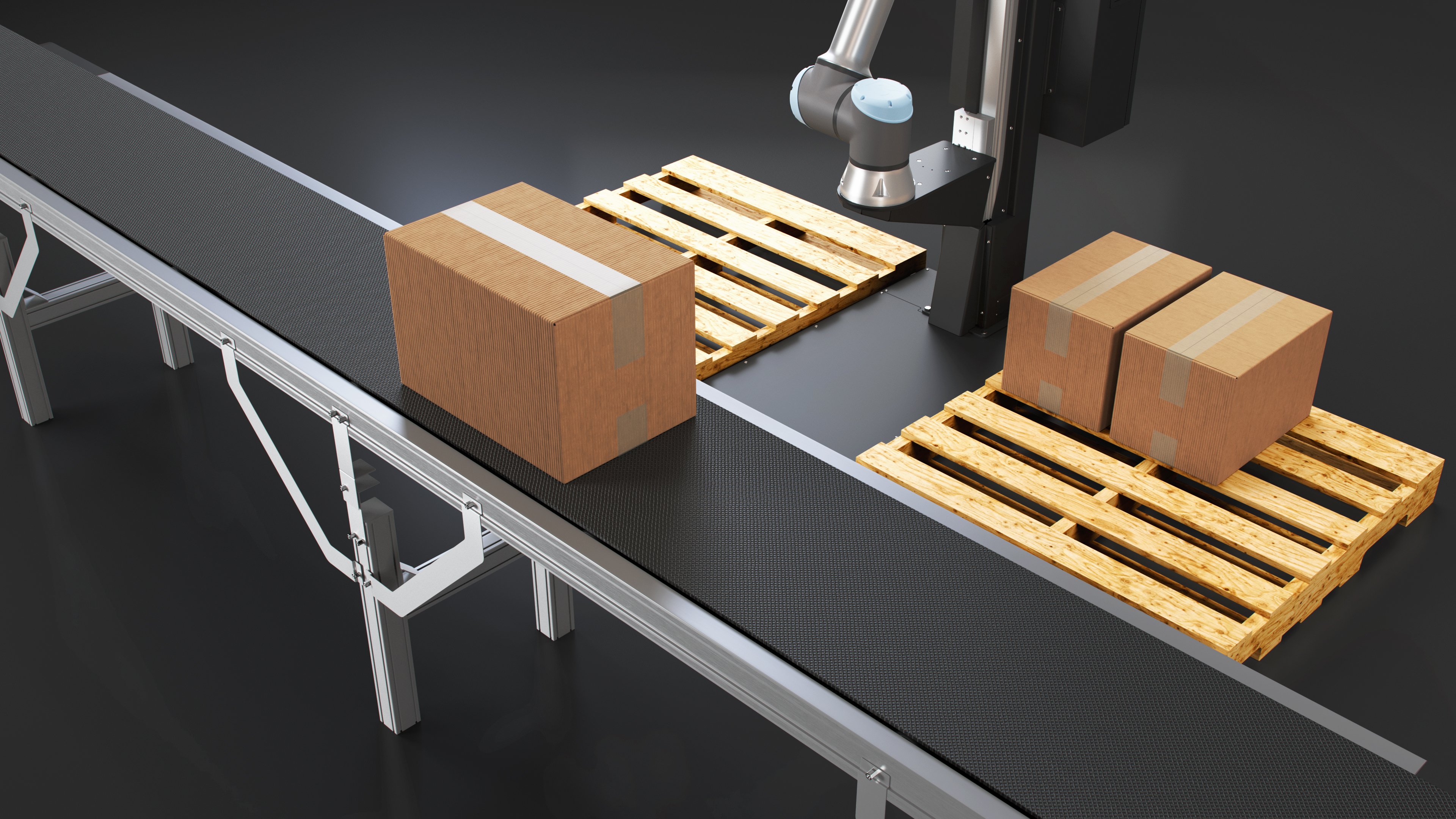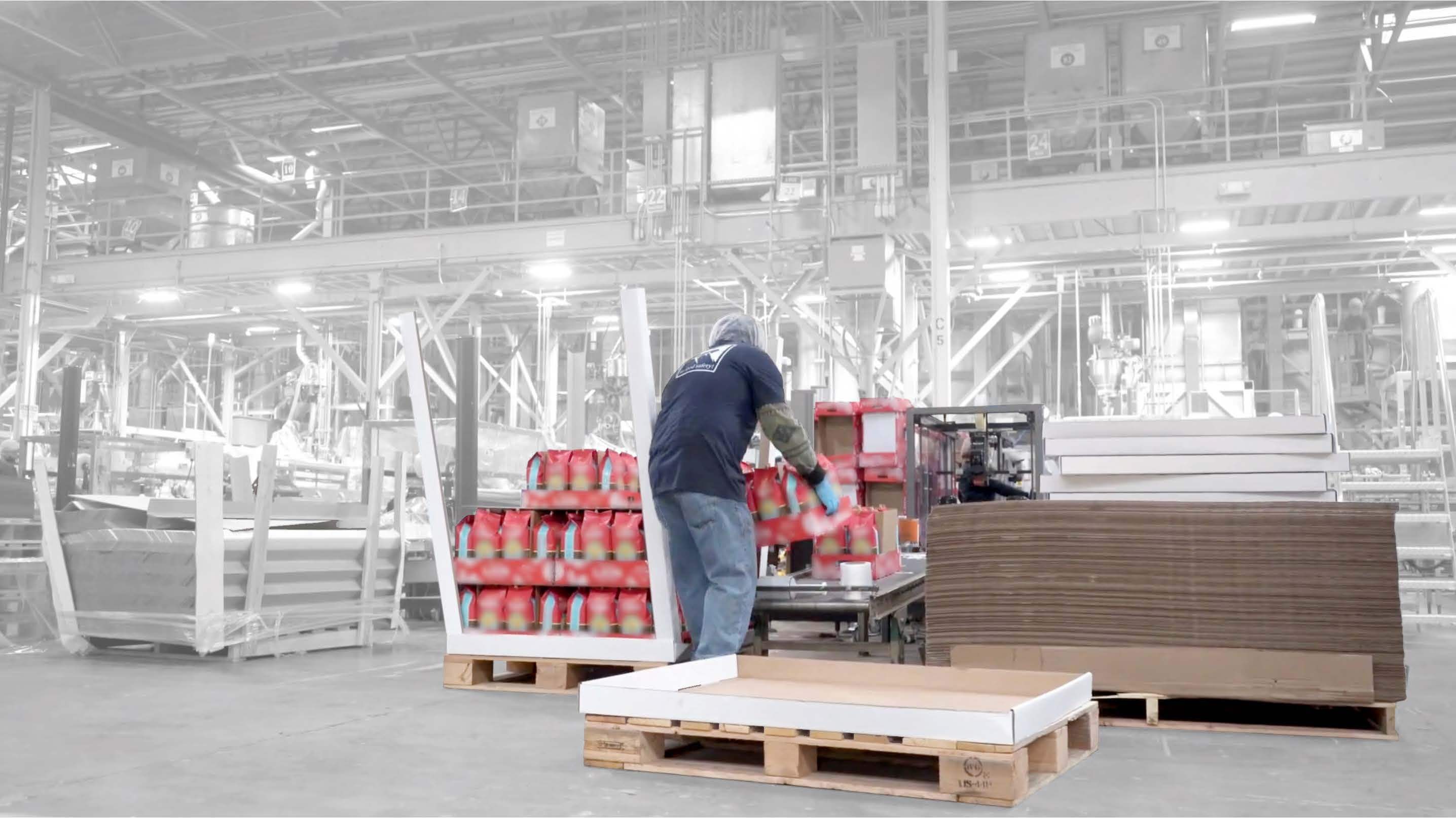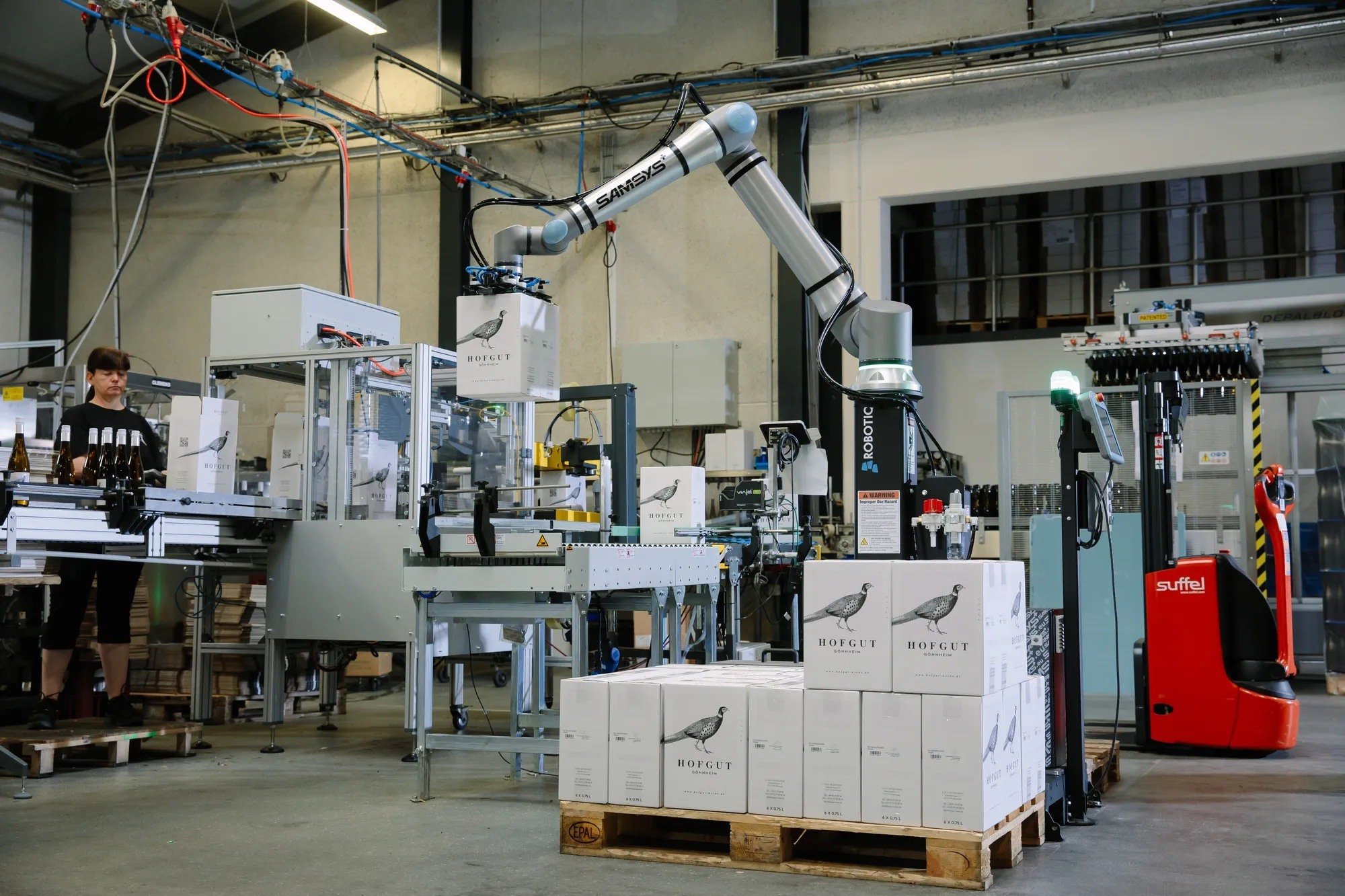5 Automated Palletizing Solutions You Should Consider

Posted on Mar 01, 2022 1:53 PM. 5 min read time
You've got a palletizing task that you want to automate. But there are so many automated palletizing solutions on the market!
How can you find the right palletizing solution for your business?
Automated palletizing is a growing market. This means there are more and more automated solutions every year for this fundamental operation. The multitude of different solutions is a good thing as it means you have more choice. However, more choice isn't always easy.
What should you look for in an automated palletizing solution?
It's helpful to become familiar with the basic types of automated solutions so you can understand their relative benefits and weaknesses.
Why there are so many automated palletizing solutions
The market for palletizing solutions is booming right now. Market trends show that the global palletizer market is projected to grow to 2.32 billion USD by the year 2028 and is growing at a rate of 4.2%.
This presents a lot of great opportunities for companies like yours…
In the past, you had only one option for palletizing automation. You could buy a conventional palletizer or nothing.
This lack of options meant that many companies have stayed with manual palletizing for years. Even though they could see it was inefficient, there was nothing they could do. Without the high volume required to justify conventional palletizing automation, they were stuck with this inefficiency.
Perhaps you have found yourself in the same situation? You know you want to automate. But your volumes are too low and your product lines too variable for conventional automation?
If you have hesitated from automating in the past, now is a good time to take advantage of the range of automated palletizing solutions available.
What to look for when selecting automated palletizing equipment
How can you identify the right palletizing solution for your needs?
You should be looking for a solution that sits in "the sweet spot":
- It shouldn't be too big that it unnecessarily takes up a huge amount of space on your work floor.
- It should only support throughputs that you will actually use. You don't want it to sit around inactive for most of the working day. Similarly, you don't want a solution that can't keep up if you operate at high volumes.
- It should be flexible enough to handle all of the palletizing tasks that you want to use it for. There's no point in investing in a solution that can only manage 2 of your product lines if you really want to automate 6 lines with it.
- It should be deployable in an amount of time that makes sense to you. If you want it in production soon, pick a solution that can be deployed quickly. The longer you have available for deployment, the more options you have but the longer it will be until you earn a return on investment.
5 automated palletizing solutions you should consider
Here are 5 of the most common types of automated palletizing solutions that you might come across.
The lines between some of these can be a bit blurry. For example, a conventional automatic palletizer or robotic palletizer might also include automated ancillary equipment.
1. Conventional automatic palletizing machine
Conventional automatic palletizing machines have been the dominant type of automated palletizer for years. They are big, fast, and expensive. They also take a long time to deploy.
Automatic palletizing machines usually take up a lot of space. You often see them at the end of fully automated manufacturing processes. They can palletize thousands of products per hour.
If your throughputs are high and your products are highly consistent, conventional machines can be a good choice.
2. Semi-automated palletizing machines
At the other end of the scale, semi-automated palletizing machines still rely heavily on a human worker. There are different forms of semi-automated palletizers but they are all aimed at making the task more ergonomic.
An example of a semi-automated machine is one that delivers the products to the operator at a comfortable waist height. The operator then arranges the items into a layer and the machine lowers the whole layer onto the waiting pallet.
3. Automated ancillary equipment
If you are looking to automate just a small part of your palletizing task, automated ancillary equipment can be useful. They improve the speed and consistency of just one part of the task, leaving the human worker to complete the main bulk of the palletizing task.
Examples of such equipment include automatic stretch wrapping machines, slip sheet dispensers, pallet dispensers, and pallet stackers.
4. Industrial robot palletizer
Robotic palletizers have been growing in popularity over recent years, and with good reason. Industrial robots are far more flexible than conventional types of palletizers. They easily handle varied pallet configurations and rapidly-changing product lines.
Industrial robot palletizers tend to be very big and take a long time to deploy. They employ specialized palletizing robots designed to lift entire layers of product in one movement. As a result, they are best suited to medium to high volumes.
5. Collaborative robot palletizers
Collaborative robots are the ideal solution for smaller palletizing operations. They fill a gap that has long existed in the market, allowing many more companies to access automated palletizing for the first time. They are also very quick to deploy.
Cobot palletizers are smaller than their industrial robot counterparts. Instead of lifting whole layers at once, they lift individual products or packages. This makes their operation similar to manual palletizing. So it's very easy to switch out a human worker with a palletizing cobot without it disrupting your existing process.

How to pick the right automated palletizing technology for you
Which type of solution will work best for you?
The answer will depend on various factors including how much product you need to palletize every day, the space you have available, and whether you want to completely automate your line or just parts of it.
Map out your palletizing task and note down your specific requirements.
A helpful step is to go to our palletizing solutions page. There, you will find a link to our palletizing configurator where you can build a palletizing solution and assess its suitability for your needs.
Which palletizing solution looks most useful for you right now? Tell us in the comments below or join the discussion on LinkedIn, Twitter, Facebook, or the DoF professional robotics community.







Leave a comment